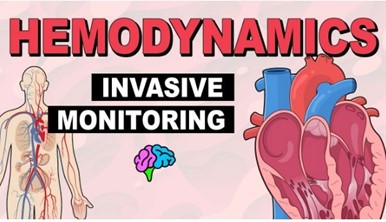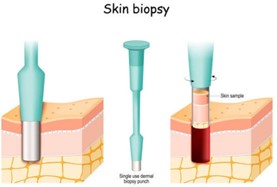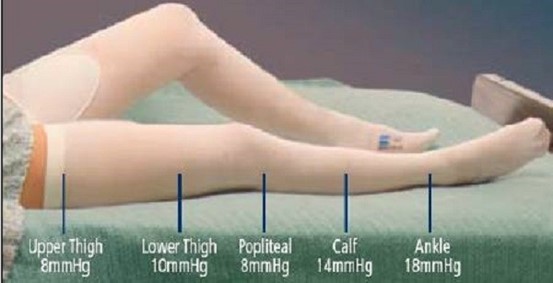Kaplan fundamentals ngn
Kaplan fundamentals ngn
Total Questions : 29
Showing 10 questions Sign up for moreThe nurse is caring for a senior adult client with three diagnoses of Parkinson's disease and an exacerbation of COPD. The nurse observes the unlicensed assistant personnel (UAP) providing morning care and obtaining vital signs by using a portable electronic blood pressure cuff and clip-on pulse oximetry sensor.
Nurse's Notes: Vital Sign # 0715: Client sitting up in bed with oxygen 2.1 per nasal cannula (NC) on. Clear pink skin and warm and dry lungs with scattered wheezes throughout. The client complains of shortness of breath and states, "I feel so much better than I did a couple of days ago." Mild tremors were noted. The client states, "My hands shake all the time."
1140: Client is still in bed with oxygen 2.1 per NC on, scattered wheezes throughout, and coarse rhonchi, which are clear with coughing. Cough is productive of yellow phlegm. Skin cool and dry. The client complains of shortness of breath or discomfort and states, "I like to keep it chilly in my room to help me breathe."
1140: The UAP reports to the nurse that the client's SpO2 is decreased.
Q1. After assessing the patient and reviewing the vital signs, which nursing action is appropriate to address the decreased SpO2?
(Select all that apply.)
Explanation
The nurse should verify the pulse oximeter is intact and properly applied and verify the supplemental oxygen is turned on and functioning. The nurse should also correlate the apical pulse rate with the pulse rate on the oximeter to ensure accuracy.

The nurse instructs the client on the use of an incentive spirometer. Which observation indicates to the nurse that additional teaching is required?
Explanation
An incentive spirometer is used to help improve lung function by encouraging deep breathing. The user should inhale through the mouthpiece, not through the nose. This observation indicates that additional teaching is required.

The nurse provides care for a client with a poor appetite. Which action does the nurse take to enhance the client's nutritional intake?
Explanation
This action can help enhance the client's nutritional intake by ensuring that the client has enough time to eat without interruptions. It is important for the nurse to prioritize the client's mealtimes and make sure that they are not disrupted by other procedures or activities.
The emergency department (ED) triage nurse receives a report from emergency medical services (EMS) on an older adult client being brought to the ED via EMS. After receiving the report, the nurse reviews the client's electronic medical record (EMR) for history and the most recent medication list.
1635: Most recent entry from a visit to primary care provider 5 days ago. Vital signs were BP 164/90, HR 96, RR 20, T 96.7°F (35.9°C), and SpO2 96% on room air. Past Medical History (PMH) positive for osteoporosis, a history of ovarian cancer treated with a hysterectomy and chemotherapy 16 years ago, hypercholesterolemia, and hypertension being managed with diet and exercise. During this recent visit, the client was started on hydrochlorothiazide (HCTZ) 12.5 mg, 1 tablet PO every AM. No Known Drug Allergies (NKDA). Additional home medications include:
- Atorvastatin 20 mg PO, 1 tablet every PM
- Calcium 1000 mg, 1 tablet PO BID
- multi-vitamin, 1 capsule PO every AM
The nurse obtained the bloodwork, started the IV, and administered morphine IV push.
> Complete the following sentence:
The nurse's highest priority is planning care knowing that the client is at risk for seizures due to
Explanation
The nurse's highest priority is planning care knowing that the client is at risk for seizures due to hydrochlorothiazide (HCTZ) and chemotherapy.
The nurse's highest priority is planning care knowing that the client is at risk for seizures due to the recent initiation of hydrochlorothiazide (HCTZ), which can cause electrolyte imbalances such as hyponatremia, and the history of chemotherapy for ovarian cancer, which may increase the risk of seizure activity.
The emergency department (ED) triage nurse receives a report from emergency medical services (EMS) on an older adult client being brought to the ED via EMS. After receiving the report, the nurse reviews the client's electronic medical record (EMR) for history and the most recent medication list.
The client was transferred to ED Bed 5 via stretcher. The client’s spouse is at the bedside. The client states "I feel so much better now except my wrist. It's really hurting." Advised to assess and then check with ED physician about something for the pain. VS BP 112/68 HR 99 RR 20. T 98.4° F (36.9° C). SpO2 96% on room air. The client is alert and oriented (A&O x 4), pleasant, and cooperative. PERRLA, skin intact with no bruising except for dorsal left forearm and wrist which is ecchymotic and edematous. Radial pulses are strong and equal (+3). Fingers warm with capillary refill - 3 sec. Lungs clear Abdomen soft with bowel sounds x 4 quadrants. Pedal pulse + x 4 and no pedal edema.
The client is being prepped for an open reduction internal fixation of the left wrist on the morning of day 2.
> Which three findings indicate that the client’s hemodynamic status has improved?
Explanation
An increase in blood pressure (BP) from 112/68 mm Hg to 122/80 mm Hg indicates an improvement in hemodynamic status, as it shows that the client's blood vessels are constricting to maintain BP and tissue perfusion. f) An increase in urine output from 18 mL/hour to 45 mL/hour indicates an improvement in renal function and fluid balance, which is important for maintaining hemodynamic stability. c) An increase in serum potassium level from 5 mEq/L (5 mmol/L) to 5.4 mEq/L (5.4 mmol/L) indicates an improvement in electrolyte balance, which is important for maintaining proper cardiac function and hemodynamic stability.
Option b) Serum sodium decreased from 146 mEq/L (146 mmol/L) to 138 mEq/L (138 mmol/L) is not a finding that indicates improvement in hemodynamic status. Hyponatremia or low serum sodium levels can cause fluid shifts in the body leading to altered mental status, seizures, and cerebral edema, among other complications. However, the given information does not suggest that the client has hyponatremia or that their hyponatremia has improved.
Option d) Urine output averaging 18 mL/hour is not an improvement, and it may indicate renal insufficiency or failure, which can lead to fluid overload and hemodynamic instability.
Option e) Bowel sounds in all four quadrants indicate normal bowel motility, which is important for proper digestion and absorption of nutrients but does not directly indicate an improvement in hemodynamic status.

The nurse provides care for a client recovering from a motor vehicle crash. For which sign of fluid volume overload does the nurse measure the client's intake and output? (Select all that apply)
Explanation
These are all signs of fluid volume overload. Measuring the client's intake and output can help the nurse monitor the client's fluid balance and detect any imbalances. A productive cough may indicate fluid accumulation in the lungs.
Weight gain and edema are also signs of fluid retention.

The nurse provides care for a client having an incisional biopsy of a skin lesion. Which teaching about the care of the site does the nurse provide to the client?
Explanation
After an incisional biopsy of a skin lesion, the client should be instructed to keep the suture area covered with gauze to protect it from irritation and infection. The area should be kept clean and dry, but cleansing with hydrogen peroxide is not necessary and may actually delay healing. The use of hydrocortisone cream is not recommended as it may interfere with wound healing. The area should not be left open to air as this may increase the risk of infection. The client should also be instructed to avoid strenuous activity and lifting heavy objects until the site has fully healed.

The nurse provides care for a child with an abdominal wound. The wound edges are approximated. Which does the nurse include when rendering the prescribed wound care to this child? (Select all that apply)
Explanation
These are all important steps in rendering prescribed wound care for a child with an abdominal wound. Measuring the size of the wound helps to track healing progress. Working outward from the incision and wiping from a clean area to a less clean area helps to prevent infection.

A client recovering from surgery sits in a chair for breakfast. Which action does the nurse take before applying newly prescribed anti-embolism stockings to the client's lower extremities?
Explanation
Before applying anti-embolism stockings, the nurse should ask the client to lie supine in bed for 15 minutes. This is because anti-embolism stockings should be applied with the client in a supine position ¹. This helps to promote blood return to the heart and decrease the risk of blood clots ¹.

A client receives a clear liquid diet. The nurse removes which item from the client's tray? (Select all that apply)
Explanation
Choice A: Cream is not allowed on a clear liquid diet because it contains fat and protein, which make it opaque.
Choice B:While plain gelatin is allowed, applesauce is not because it is a puréed/semi-solid food, not a clear liquid.
Choice C:Clear fruit juices without pulp (such as apple juice, cranberry juice, and white grape juice) are permitted.
Choice D:Broth or bouillon is considered a clear liquid, as long as it does not contain solid particles.
Choice E:Tea is a clear liquid, and sugar does not change its clarity.
Choice F:Ice pops made from clear liquids (such as fruit juice without pulp) are permitted.
You just viewed 10 questions out of the 29 questions on the Kaplan fundamentals ngn Exam. Subscribe to our Premium Package to obtain access on all the questions and have unlimited access on all Exams. Subscribe Now



